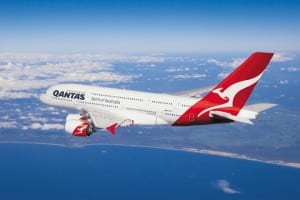 Chris Gray is a Managing Director of ICON International Communications, Ketchum’s exclusive affiliate partner in Singapore and Australia.
Chris Gray is a Managing Director of ICON International Communications, Ketchum’s exclusive affiliate partner in Singapore and Australia.
On Oct. 29, one of the highest-profile industrial disputes in Australia’s history reached new heights – or lows, depending on your perspective – when the country’s national carrier, Qantas, grounded its entire fleet of aircraft around the world.
The decision to stop the planes was taken by the airline’s CEO, Alan Joyce, after months of protracted labor negotiations between the airline and three of its key unions.
Joyce said the unions were hell-bent on destroying the airline by opposing its plans to revamp work practices and create long-term viability for the business. Unions, on the other hand, accused Joyce of ignoring demands to negotiate revised workplace agreements with its members.
Fortunately, the standoff was short-circuited when the Australia government invoked legislation that forced all parties to get back to work and negotiate a settlement moving forward.
The grounding of Qantas generated unprecedented headlines around the world – not just in traditional media, but also on social media networks. Indeed, it is estimated there were over 250,000 mentions of Qantas on primary social media networks such as Twitter within the first 12 to 24 hours of the drama unfolding.
However, one of the questions being asked in the aftermath of the crisis is how well Qantas managed the social media aspect of its communications.
Many commentators believe the airline was found wanting in this regard – particularly in the early stages. For instance, it appears Qantas was slow off the mark in the hours following the airline’s decision to ground the planes and lost the advantage as thousands of passengers took to their mobile phones and laptops to vent their frustrations.
While Qantas looks to have managed its PR efforts through traditional media quite well, it took far too long to engage in a meaningful way through channels such as Twitter and Facebook. Indeed, an analysis of the event’s social media timeline indicates it was well into the following day before the company moved its communication efforts into another gear.
As an example, Qantas posted just 20 tweets and a few Facebook updates on the day of the grounding. However, this number rose sharply to almost 400 tweets and Facebook updates every few hours by the time the decision was made to send the planes back into the air.
In addition to its lack of speed, the company also received some stinging criticism about the tone of its communication in these early stages, with many people describing the language as “wooden, aloof and impersonal.” A review of some of the commentary shows much of Qantas’ language in these early stages appeared distant and mechanical.
The upshot is that the Qantas scenario might well be a good lesson for many companies when it comes to social media. The takeaways would be these:
- Firstly, speed is the key to good communications. It is critical to gain control of the crisis immediately after the drama has broken.
- Secondly, social media must be viewed as an integrated part of the broader communications strategy. It must support and complement traditional media activities – and never be viewed as a stand-alone channel.
- And, lastly, the language used in all communications needs to be human, personal and comforting.


